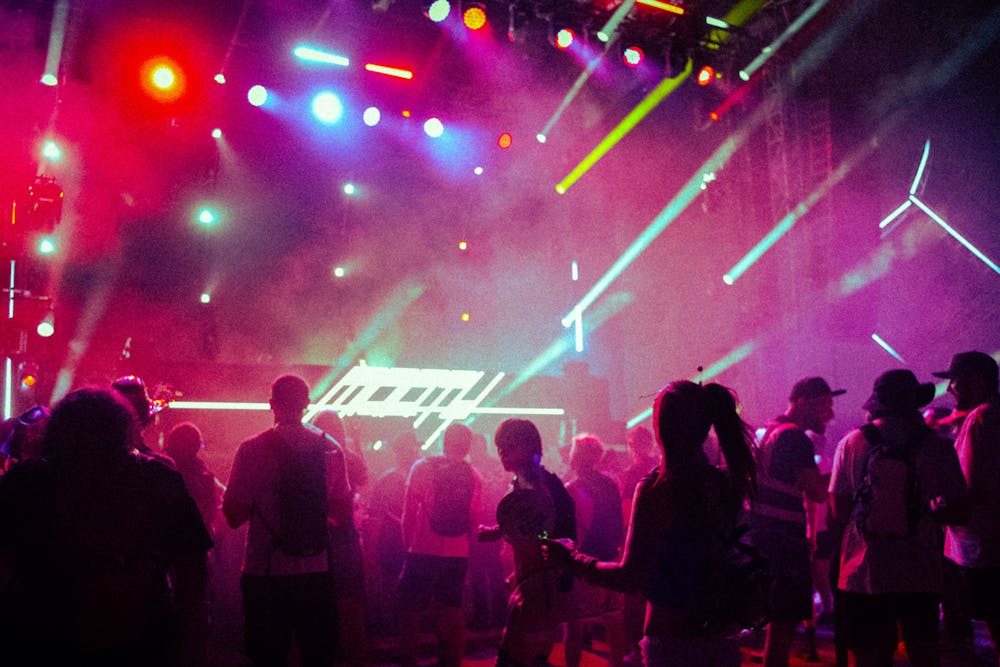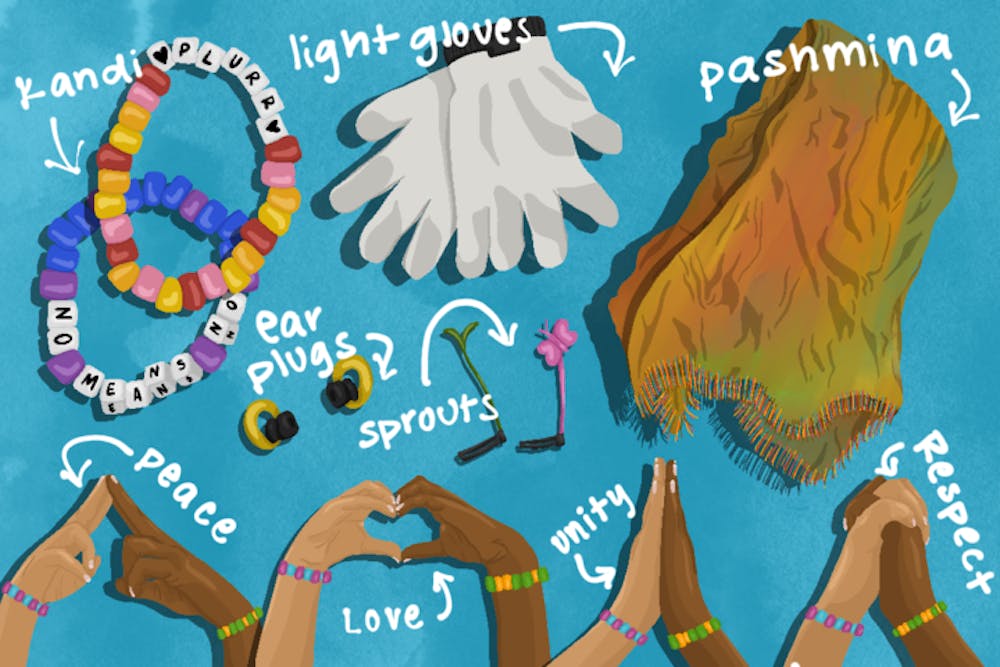Outside of Phoenix Raceway, music is blasting, lasers are blinding, people are head-banging, and just about everyone is soaking in what raves have to offer.
The two-day-long Goldrush Music Festival showcases what raves are about: People having fun all night long. The EDM dance parties have been around since the '80s, but as they've become mainstream, more people find that rave culture is losing its touch.
EDM music can be divided into three separate subcategories: House, techno and dubstep. Many popular rave artists visited the Valley for Goldrush, including American DJ Sullivan King, electronic duo The Chainsmokers, hardstyle duo Sound Rush and Australian DJ Timmy Trumpet.
Alongside the music, raves are characterized by their distinct culture and traditions.
Glitter, pasties, a crocheted strawberry hat — bright, festive attire is expected. Many ravers also cover their arms from wrist to elbow in kandi, which are friendship bracelets specifically created to trade.
People often carry around trinkets like sprouts with them to hand out, which are little plastic plant clips usually clipped in hair.
"Once you're in the rave community, we all know we're here for one thing: To enjoy ourselves and just have fun with people and just spread the love," said Penny Nguyen, a senior studying supply chain management and marketing. "I really enjoy the PLUR because I'm always having a good time there and I know that everyone around me is going to make it special."
Something people go by during raves is an understanding of PLUR: meaning peace, love, unity and respect. PLUR is important to follow when attending raves, it's what keeps the rave community together.
"What I found with raves … is that a lot of the people you're around are a lot nicer," said Jordan Cordero, a junior studying film and media productions. "When you're in a crowd and you want to pass someone, a lot of people are very nice. They're not like 'Oh, you can't pass me.'"
Other than intense mosh pits, which is a circle formed within the crowd with several people pushing each other around with love, people are ultimately just kind.
"That's just what you have to do at raves," Nguyen said. "The vibes are always there, but you have to remember that you have to be nice and respectful with everyone and spread the love, definitely."
Yet, with EDM and rave popularity growing and more people joining the rave scene, the community may be shifting. Some fans believe rising popularity on social media, emphasized by American DJ John Summit, has cultivated an audience that less abides by PLUR.
Nguyen said during a John Summit concert there was not a lot of PLUR and the show lacked "rave energy." The majority of the crowd seemed to be "frat boys and sorority girls who don’t really understand what rave culture is," Nguyen said.
"So it definitely made rave culture more popular," Nguyen said. "It's becoming more of a thing that a lot of people do, especially in college."
"Different audiences coming together definitely makes it more commercialized," said Jacob Burrola, a junior studying film and media production, who has been attending raves for nearly four years. Burrola said people tend to go because "it's a trend."
Much of rave culture and music has spread outward to ASU and other fanbases. During American singer-songwriter Taylor Swift's Eras Tour, several fans traded friendship bracelets. Though the tradition of exchanging kandi is not owned by ravers, much of its popularity comes from rave culture.
Recently ASU’s 2024 Devilpalooza — a student-organized music festival for Sun Devils — switched its theme to EDM. The festival was centered around what the students wanted the most and with the growth of EDM culture at ASU, DJ Steve Aoki and various other EDM artists headlined.
READ MORE: What's new with Devilpalooza: This year's free festival hosts Steve Aoki, EDM artists
"It's become more mainstream, and with that, people kind of forget the culture and everything behind it, like a lot of things when they become mainstream," Burrola said. "Not a lot of people know about (the culture) or even follow that, and it causes it to become not a completely bad experience, but definitely not as fun of an experience for other people when their space gets invaded."
At the end of the day, ravers only wish for the culture around raves, and the energy within them, to be respected and maintained.
"If you're gonna start raving, just remember why you're there," Nguyen said. "Always remember the acronym PLUR: Peace, love, unity, respect and also responsibility."
Edited by Andrew Dirst, Sophia Braccio and Natalia Jarrett.
Reach the reporter at sjames51@asu.edu and follow @sennajames_ on X.
Like The State Press on Facebook and follow @statepress on X
Senna is a sophomore studying journalism and mass communication with a minor in Spanish. This is her fourth semester with The State Press.





